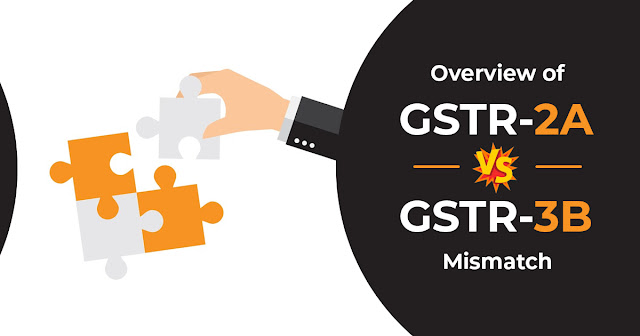The Goods and Services Tax (GST) implementation in its starting phase, 2017-18 and 2018-19, posed difficulties in the reconciliation of Form GSTR-2A and GSTR-3B.
Section 16 of the CGST Act 2017 was causing certain issues in several instances during the initial GST enactment (i.e., 2017-18 and 2018-19). The section defines the criteria and conditions for availing of Input Tax Credit (ITC).
It was noticed that accurate information regarding outward supplies was not furnished by the supplier invariably in GSTR-1, resulting in differences or discrepancies in the Form GSTR-2A of the recipient.
Nevertheless, recipients claimed ITC (input tax credit) for such supplies in Form GSTR-3B. While authorities were carrying out scrutiny/investigation/Audit, it was discovered that in some cases, ITC had been claimed in GSTR-3B. but was not shown in GSTR-2A.
Circular No. 183/15/2022 – Dated: 27/12/2022, was released to provide an explanation, to deal with this issue consistently.
As per the circular, in case a registered individual demands the ITC in GST-3B in a financial year that is below Rs. 5 lakhs compared to the ITC given in GSTR 2A, the proper officer will urge the individual claiming the Input Tax Credit (ITC) to provide a certificate from the appropriate supplier, to verify the supply. It must be verified through the certificate that the supplier has indeed supplied to the registered individual and that the supplier has duly paid the tax for such supply in the GSTR-3B return.
It must be noted that for the FY 2017-18 timeline, following Section 16(4) of the CGST Act, which specifies the maximum time frame under which an individual can claim ITC. The eligibility for the benefit outlined in section 16(4) will be forfeited if the GSTR-3B return is submitted after the specified deadline from September 2018 until the filing of the return for March 2019, unless the details of the respective supply in the supplier's GSTR-1 form have been provided by the stipulated final date of GSTR-1 for March 2019.
Moreover, particular cases mentioned in this Notification apply to genuine mistakes in reporting during the period of FY 2017-18 and 2018-19.
These guidelines specifically pertain to the actions carried out currently like scrutiny, audit, or investigation for the financial years 2017-18 and 2018-19. However, they also pertain to cases of the said financial years where adjudication or appeal proceedings are yet to be concluded.
Appropriate responses to notices can be prepared considering the particular circumstances of each individual case.
Here, we have showcased some important cases that will be helpful for more understanding regarding GST ITC differences in GSTR 3B and GSTR-2A Forms. Click the link for more.


Comments
Post a Comment